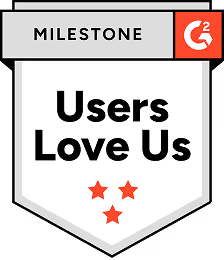Power of Emotion in B2B Sales: Using AI to Connect on a Deeper Level
.jpeg)
Emotions play more of a role in sales than we like to think. “When we like someone,” legendary American psychologist Robert Ciladini writes in his seminal book Influence, “we are more receptive to their ideas.”
The focus in B2B sales has long been on logic and facts. We try to create repeatable sales motions that can be copy-pasted from one buyer to the next. Yet, despite our best attempts to be more Spock than Kirk, emotions have always (and will always) played a role in the buying process. Especially in B2B sales, buyers tend to buy for emotional reasons and justify with logic after the fact.
The question then becomes, how can sales teams tap into this trend and connect with potential customers on a deeper, more human level?
In this post, we'll explore how to maximize your ability to leverage feelings over facts in B2B sales and how AI tools like Regie.ai can be leveraged to connect with potential customers on a deeper level. We'll also discuss the importance of striking a balance between human touch and machine learning.
The Trend of Feelings Over Facts in B2B Sales
A deeper dive into understanding the feelings of buyers can help at every stage of the process, from ideation to rebranding.
“One firm with a very "tired" brand explored consumers' hidden thoughts and feelings,” relayed Harvard Business professor Gerald Zaltman in an interview, “and discovered a relevant, basic emotion that had been overlooked by all brands in the category. They were able to connect this emotion with their brand giving it a major sales boost.”
Sales and marketing professionals have spent the last decade trying to leverage the immense amount of data at their fingertips to glean these sorts of insights. It’s important to point out that Zaltman didn’t recommend focus groups or statistical analyses to arrive at their conclusion—they talked to their audience 1:1.
While revenue teams do have vast stores of data that can determine trends at scale, it can be difficult to tie these back to the individual person with any degree of accuracy. 95 percent of buying decisions aren’t made consciously but take place below the surface in the subconscious mind, says Zaltman. Without having those individual conversations, teams will just be guessing what the common denominator is or making assumptions on emotion-less datasets.
Having those 1-to-1, personal conversations is exactly how top performing sales teams break into top tier accounts.
But how can sales teams balance individualized outreach that accounts for emotion while also operating at scale to hit revenue goals?
AI Tools for Tapping into the Emotional Side of Sales
One answer is AI tools like Regie.ai.
Natural language processing can detect emotional keywords and phrases in customer interactions. This allows sales teams to tailor their messaging to the specific emotional triggers that are most likely to resonate with each prospect.
For example, imagine a B2B sales professional is trying to sell a new CRM software product to a potential customer. They've already had several conversations with the customer and feel like they're getting close to closing the deal. However, they're not quite sure what it will take to push the customer over the edge.
This is where Regie.ai comes in.
Users can create a custom library of messaging, content, previous communications, and more with the customer within the Regie.ai platform. Regie.ai’s email coach can then analyze your email text and ensure you’re using language that reflects what's most important to the customer.
Perhaps Regie.ai identifies that the customer is particularly concerned about the security of their data. Armed with this knowledge (and with the Regie.ai chrome extension), the sales professional can craft a more personalized pitch that emphasizes the security features of the software product.
Furthermore, you can quickly reference data sets like OCEAN and DISC profiles to understand the best ways to communicate with your buyer and their personality type.
Successful Implementation of AI Tools in B2B Sales
Regie.ai has already been successfully implemented by a number of companies for increasing alignment between their messaging and their audience. Crunchbase, a sales prospecting tool, struggled with message consistency and relevancy throughout its outbound sales efforts.
Because they lacked an overarching focus on the audience, their messaging varied from sequence to sequence, leaving much to be desired. “A consistent framework is helpful” notes Will Reyes, SDR Team Lead at Crunchbase, “it means we can say, ‘this is good messaging’ and ‘this is what you should be working with’”.
As a result, even with newer reps, the messaging they reached out to the market with is far more engaging and they were able to 16X their reply rates.
Striking a Balance Between Human Touch and Machine Learning
While it’s true that AI can offer unprecedented levels of insights and automation, maintaining a human touch in sales interactions is essential—especially when it comes to building trust and rapport with customers.
The reason Crunchbases efforts succeeded wasn’t just because of adding a new tool to the mix.
Simply feeding a lead list into a sales engagement platform isn’t going to win you an abundance of deals and will likely do more harm than good if you mass communicate with them. This is because an overreliance on AI tools can lead to robotic or impersonal interactions that may turn potential customers off.
Sales teams need to harness the power of AI while still preserving the core of what makes personal outreach, well, personal.
For instance, sales teams can use AI tools like Regie.ai to assist with research and generate personalized snippets of content helping frame a certain idea, preventing an over reliance on email templates that harm deliverability. AI can speed up that content production timeline, while still allowing for a tailored approach to each prospect.
3 ways to add more emotion to your sales outreach using AI
Using emotion in outreach isn’t about responding quickly or about reaching the maximum number of people; it's about responding in a way that demonstrates understanding and respect for the customer's needs and concerns. Here are a few ways to add more of a human touch to your messaging:
Personalize, personalize, personalize
This can’t be overstated. If you’re looking to add more emotional impact, you must make it about the person on the other end of the message, not about you, the sender. If your message doesn’t sound like it was written for a single, unique person, try again. A quick way to check if you’re on the right track is to read the content out loud. If it sounds like you’d send it to a friend, you’re on the right track. If it sounds like something out of PRNewswire, go back and revise.
Use storytelling
To use an (inaccurate) US history example, many have heard the legend of George Washington and the cherry tree but comparatively fewer know what year he was born (1732). That’s because people can latch onto a story far more than they can facts and figures. In the case of your outreach, you could share a success story from a similar client, or explain how your product or service can help the customer overcome a particular challenge. AI tools can help by identifying the themes and narratives that are most likely to engage each customer.
Show empathy
This means acknowledging the customer's concerns, validating their feelings, and offering solutions in a caring and respectful manner. If your prospects are worried about some aspect of your product, don’t just ignore their feelings. Address the fact that they’re worried and try to understand what it is about their worry that’s proving to be an obstacle. AI can guide this process by highlighting the best way to frame a customer communication, allowing sales teams to respond in a more empathetic and emotionally intelligent way.
Closing thoughts
Feeling understood is a powerful emotion whether in the boardroom or the living room.
The future of effective B2B sales communication may be powered by AI but the most successful organizations will recognize that their team must be human, personal, and emotionally intelligent.
If you’re looking for more ways top-tier sales teams are using AI to make this happen, check out our digital guide on How to Scale Sales Outreach Personalization Using AI. Inside, you’ll get insights from sales and revenue leaders about their philosophy on personalization, how they train their sales organizations, and ways that AI can practically help scale sales outreach personalization.
FAQs
Read more posts
View all BlogsNeed more help?
If you still have questions, make sure to check out our Help Center: there, you'll find all the tips & advice you'll need to get your team up & running with Regie.ai.









